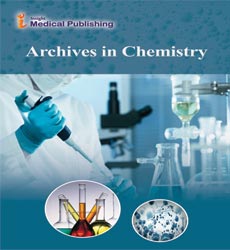Spectroscopy Now Covers a Sizable Fraction of the Electromagnetic Spectrum
Guangren Qian*
Guangren Qian, School of Computer and Communication Engineering, University of Science and Technology, Beijing, China
Corresponding author: Guangren Qian, School of Computer and Communication Engineering, University of Science and Technology, Beijing, China; Email: guangren26@gmail.com ,
Citation: Qian g (2021) Spectroscopy Now Covers a Sizable Fraction of the Electromagnetic Spectrum Arch Chem Vol.2 No. 3:36
Received date: June 04, 2021; Accepted date: June 19, 2021; Published date: June 26, 2021
Introduction
Study of the absorption and emission of sunshine and other radiation by matter, as associated with the dependence of those processes on the wavelength of the radiation. More recently, the definition has been expanded to incorporate the study of the interactions between particles like electrons, protons, and ions, also as their interaction with other particles as a function of their collision energy. Spectroscopic analysis has been crucial in the development of the most fundamental theories in physics, including quantum mechanics, the special and general theories of relativity, and quantum electrodynamics. Spectroscopy, as applied to high-energy collisions, has been a key tool in developing scientific understanding not only of the electromagnetic force but also of the strong and weak nuclear forces. Spectroscopic techniques have been applied in virtually all technical fields of science and technology. Radio-frequency spectroscopy of nuclei in a magnetic field has been employed in a medical technique called magnetic resonance imaging (MRI) to visualize the internal soft tissue of the body with unprecedented resolution. Microwave spectroscopy was used to discover the so-called three-degree blackbody radiation, the remnant of the big bang (i.e., the primeval explosion) from which the universe is thought to have originated (see below Survey of optical spectroscopy: General principles: Applications). The internal structure of the proton and neutron and therefore the state of the primary universe up to the first thousandth of a second of its existence are being unraveled with spectroscopic techniques using high-energy particle accelerators. The constituents of distant stars, intergalactic molecules, and even the primordial abundance of the weather before the formation of the primary stars are often determined by optical, radio, and X-ray spectroscopy. Optical spectroscopy is used routinely to identify the chemical composition of matter and to determine its physical structure. Spectroscopic techniques are extremely sensitive. Single atoms and even different isotopes of the same atom can be detected among 1020 or more atoms of a different species. (Isotopes are all atoms of a component that have unequal mass but an equivalent number. Isotopes of an equivalent element are virtually identical chemically.) Trace amounts of pollutants or contaminants are often detected most effectively by spectroscopic techniques. Certain sorts of microwave, optical, and gamma-ray spectroscopy are capable of measuring infinitesimal frequency shifts in narrow spectroscopic lines. Frequency shifts as small together part in 1015 of the frequency being measured are often observed with ultrahigh resolution laser techniques. Because of this sensitivity, the foremost accurate physical measurements are frequency measurements. Spectroscopy now covers a sizable fraction of the electromagnetic spectrum. The table summarizes the electromagnetic spectrum over a frequency range of 16 orders of magnitude. Spectroscopic techniques are not confined to electromagnetic radiation, however. Because the energy E of a photon (a quantum of light) is said to its frequency ν by the relation. Where h is Planck’s constant, spectroscopy is actually the measure of the interaction of photons with matter as a function of the photon energy. In instances where the probe particle isn't a photon, spectroscopy refers to the measurement of how the particle interacts with the test particle or material as a function of the energy of the probe particle. An example of particle spectroscopy may be a surface analysis technique referred to as Electron Energy Loss Spectroscopy (EELS) that measures the energy lost when low-energy electrons (typically 5–10 electron volts) collide with a surface. Occasionally, the colliding electron loses energy by exciting the surface; by measuring the electron’s energy loss, vibrational excitations related to the surface are often measured. On the opposite end of the energy spectrum, if an electron collides with another particle at exceedingly high energies, a wealth of subatomic particles is produced. Most of what's known in high-energy physics (the study of subatomic particles) has been gained by analyzing the entire particle production or the assembly of certain particles as a function of the incident energies of electrons and protons. The following sections focus on the methods of electromagnetic spectroscopy, particularly optical spectroscopy. Although most of the opposite sorts of spectroscopy aren't covered intimately, they need an equivalent common heritage as optical spectroscopy. Thus, many of the basic principles used in other spectroscopies share many of the general features of optical spectroscopy.
© Copyright iMedPub | This article is available from: https://www.imedpub.com/archives-in-chemistry
Open Access Journals
- Aquaculture & Veterinary Science
- Chemistry & Chemical Sciences
- Clinical Sciences
- Engineering
- General Science
- Genetics & Molecular Biology
- Health Care & Nursing
- Immunology & Microbiology
- Materials Science
- Mathematics & Physics
- Medical Sciences
- Neurology & Psychiatry
- Oncology & Cancer Science
- Pharmaceutical Sciences
